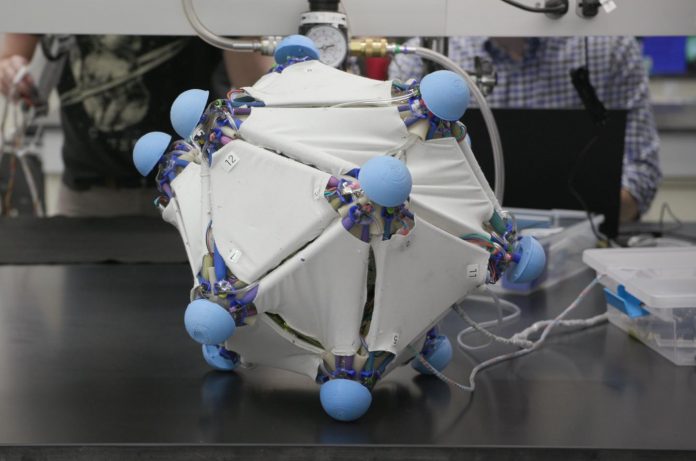It is no more in trend to see a robot in bulky, rigid material and built for a specific purpose. You will be fascinated by knowing this new technology which can turn everyday objects into robots.
A team at Yale University has developed flexible robotic sheets known as “Robotic Skins” can make anything move. This technology will enable users to turn their inanimate objects into robotic systems.
Rebecca Kramer-Bottiglio, assistant professor of mechanical engineering & materials science, said, the skins are designed with no specific task in mind, they could be used for everything from search-and-rescue robots to wearable technologies.
Each piece of robotic skin is composed of elastic polymer or fabric, embedded with either air pouches that inflate when pumped full of gas or with nickel-titanium coils that contract when heated by electric current. These gas pouches and coils allow the robotic skin to move and change shape.
This whole research was taken place at Kramer-Bottiglio’s lab. The makeshift robots can execute numerous tasks depending on the properties of the soft objects and how the skins are applied.
She said, “We can take the skins and wrap them around one object to perform a task — locomotion, for example — and then take them off and put them on a different object to perform a different task, such as grasping and moving an object.”
“We can then take those same skins off that object and put them on a shirt to make an active wearable device.”
These robotic skins have broken the stereotypical design of the single-purpose robot. However, it allows, a user to design his own multi-purpose robot. Kramer-Bottiglio says that means they can be used in settings that hadn’t even been considered when they were designed.
Additionally, using more than one skin at a time allows for more complex movements.
Kramer-Bottiglio said you can layer the skins to get different types of motion. “Now we can get combined modes of actuation — for example, simultaneous compression and bending.”
During the demonstration, the researchers created a few prototypes. These include foam cylinders that move like an inchworm, a shirt-like wearable device designed to correct poor posture, and a device with a gripper that can grasp and move objects.
She said, “One of the main things I considered was the importance of multifunctionality, especially for deep space exploration where the environment is unpredictable.”
“The question is: How do you prepare for the unknown unknowns?”
